Will Gresson – 20 June, 2013
The first thing you notice is that New Zealand has had an upgrade in location since 2011, with the National Pavilion in 2013 being housed inside the Istituto Santa Maria della Pieta; this beautiful old building sits within a ten minute walk of the Arsenale, one of the two major venues of the Biennale. The venue's increased visibility and ease of access is undoubtedly beneficial, however what is also noticeable is how well the work itself fits into the venue.
Venice
Bill Culbert
Front Door Out Back
Curated by Justin Paton
1 June - 24 November 2013
The Venice Biennale is always an interesting discussion point among New Zealanders. Even now, in 2013, few have forgotten the uproar when et al. was selected to represent New Zealand in 2005, and the ensuing “public debate” which almost led to the end of New Zealand’s involvement in the event. It must come as some relief then that Bill Culbert’s exhibition, Front Door Out Back has seemingly been so well received in 2013, with Sir Nicholas Serota of Tate in Great Britain being one of many to praise the work at its opening.
The first thing you notice is that New Zealand has had an upgrade in location since 2011, with the National Pavilion in 2013 being housed inside the Istituto Santa Maria della Pieta; this beautiful old building, a former orphanage, sits within a ten minute walk of the Arsenale, one of the two major venues of the Biennale. The venue’s increased visibility and ease of access is undoubtedly beneficial, however what is also noticeable is how well the work itself fits into the venue. In a city where architecture and history threaten to overshadow everything else around it, this is no small achievement.
As you walk into La Pieta, the installation comprising Drop and Bebop leads you down the hallway into the rest of the exhibition. Comprised of old wood and Formica tables and chairs fashioned in a sort of playful cascading cloud, the furniture has been refashioned from its former purposes and activated by single bolts of fluorescent light. The work feels light hearted while simultaneously commanding attention, its effect heightened by the tall space.
At the end of the hallway, you pass through a small corridor into a larger courtyard. Within the corridor itself sits Strait, a single line of anchor milk bottles with another bolt of fluorescent light through them. The bottles themselves are solid white plastic; however the thinner tops light up to reveal the effect of Culbert’s activation. In the courtyard stand the works Walk Blue and Walk Reflection. Again Culbert repurposes the mundane and typical and transforms them into contrasting light boxes, with one reflecting light during the day and the other releasing blue light in the evening.
This courtyard leads into another room, containing a further large scale light work, Daylight Flotsam Venice. This seemingly chaotic work combines more of Culbert’s repurposed plastic bottles in a sort of semi-chaotic patchwork with 150 florescent light tubes. Justin Paton alludes to the interesting relationship between the “cult of Venetian light” and Culbert’s seemingly subversive response. The use of cheap plastic bottles is likewise suggested as a further subversion in the face of Venice’s historically famous glass-blowing industry.
Some media commentators have mentioned the use of “junk” in Culbert’s work, which feels more like an attempt to stir disquiet over the cost of sending the work to Venice than anything else. More significant and worthy of note perhaps is the way that Culbert’s work incorporates these objects in such a way as to render them almost totally removed from their former purposes. The familiarity and levity of the milk containers remains, but additionally there is a sort of joyfully convincing transformation at work.
The relationship to the exhibitions surroundings is furthered by the work Level, which sits just past Daylight Flotsam Venice on the very edge of the water. These seven glass jugs all contain water aligned to the same level, and speak to the floating city’s never ending discussion of its slow and impending sinking beneath the waters of the canals, as well as once again referencing Venice’s history as an innovative centre for the craft of glasswork.
The second to last work as you make your way through into another courtyard is perhaps the most poignant, and also arguably the most clearly referential to New Zealand and its recent history. HUT, Made in Christchurch is a skeletal structure of a shelter built from nine longer bolts of fluorescent light. The relationship to the tragedy in Christchurch is clear, but it also speaks to a more primal and human element of the need for shelter and protection. At a Biennale where much of the curatorial focus is on the nature of human knowledge and understanding, and its development, Culbert’s frame conjures strong notions of human endeavour and their limits.
The final work in Culbert’s exhibition, Where are the other two?, returns to the artist’s repurposing of the mundane, this time activating florescent a room full of old furniture such as desks, chairs and what appear to be old bedside tables. The room seems almost like an after-thought in some ways, perhaps lacking some of the directness of the other rooms, although it may simply be the one example of the venue and the work not complimenting each other as well as elsewhere. Individually the works are beautiful, with the varied shapes of the aged furniture all starkly cut through by Culbert’s merciless bolts of light. In separate images, the works as they stand on their own have a similar sculptural dignity as the two wardrobe pieces, suggesting perhaps they simply overcrowd each other when put so close together.
The show as a whole feels successful not just in the way it fits together, spreading through the venue and equally matching the grandeur of the building with the concentrated forethought of the works, but also as an interesting and dynamic reflection of what New Zealand art can be, and where it can go. While others may seek to keep the fiery debate about the worth of sending New Zealand to Venice every two years alive, here sits a show which taken on face value, is able to sit comfortably within both the city and the event itself.
Will Gresson
Recent Comments
John Hurrell
And Ian Wedde's book. https://eyecontactartforum.blogspot.com/2010/01/impressive-teamwork.html One of this country's all time great art publications.
John Hurrell
So sorry to hear of Bill Culbert's death. A terrific artist and lovely man. Here is an excellent interview... https://www.tepapa.govt.nz/discover-collections/read-watch-play/art/its-meaning-bill-culbert-on-void
John Hurrell
Only for some is it an overtly nationalistic project. This is what Hamish is getting at with his reference to ...
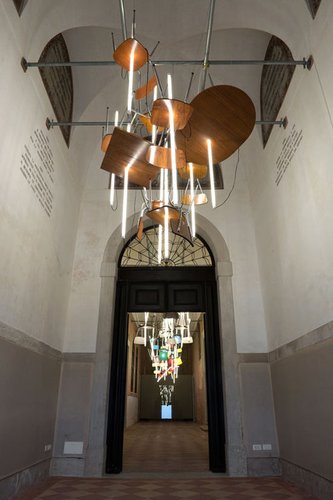


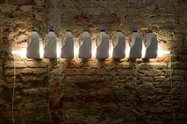
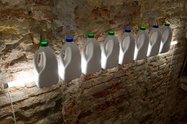
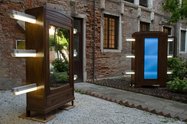
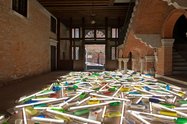
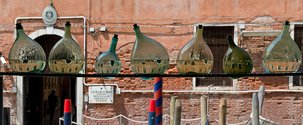
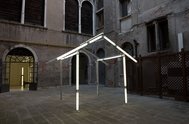
 Two Rooms presents a program of residencies and projects
Two Rooms presents a program of residencies and projects Advertising in this column
Advertising in this column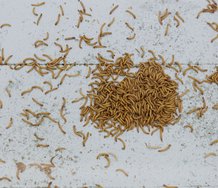
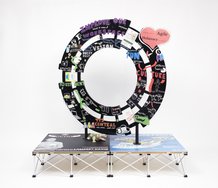
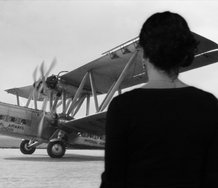
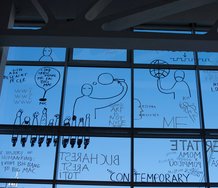
This Discussion has 15 comments.
Comment
Neil Finlay, 8:54 p.m. 20 June, 2013 #
Bill Culbert, recently awarded an honorary doctorate at Ilam, School of Fine Arts, his own alma mater, ably represents New Zealand at Venice, and while doing so brings increased visibility, and conceivably increased prestige, to his home country and to the art school he graduated from. The inadvertent irony of his feat is both deep and wide, considering recent moves, by University of Canterbury bean counters, in having yet another go at gutting Ilam’s 130 year old School of Fine Arts. The fact that Shane Cotton’s well received retrospective at Wellington’s City Gallery is already creating positive buzz, and that Cotton is yet another prominent, internationally exhibiting, New Zealand artist with a degree from Ilam, simply makes the Ilam depredation irony all the more sharp. The last time the bottom-line university administrative crowd came at the school this hard was during Ilam’s 125th year anniversary. You can’t say the green eyeshade crowd lacks note perfect (ironic) timing, now can you? Congratulations to Bill Culbert for shedding an undeniably brilliant light in Venice and by positive comparison to recent negative Ilam events, casting some much needed illumination on much darker Ilam goings on.
John Hurrell, 9:39 a.m. 21 June, 2013 #
Ilam graduates and others, concerned about what is happening at Canterbury University, can get updates from Roger Boyce, c/o the Painting department at the Art School.
John Hurrell, 9:45 a.m. 21 June, 2013 #
Getting back to Culbert, what Ian Wedde's terrific book makes clear is Bill's remarkable ability as a painter, as a young graduating artist. It would be great to organise a show of those.
Owen Pratt, 3:18 p.m. 21 June, 2013 #
I've just been doing my IR3 return (late as per) with a chaser of GST. I discovered that my GST refund was sucked away by the last provisional tax...are you dead from boredom yet?
I wonder when Bill Culbert last filed an IR3?
With scarce and scant resources is it a 'best bang for the buck' for CNZ to use Culbert's reputation in this way to further the perceptions of NZ culture, for an overseas audience?
Would it not be more truthful for this show to be sponsored from, and to represent, Britain or France; where he has based himself, and paid tax, for over 50 years?
Owen Pratt, 7:13 p.m. 21 June, 2013 #
http://www.creativenz.govt.nz/en/news/master-of-light-invited-to-represent-new-zealand-at-the-2013-venice-biennale
John Hurrell, 8:25 p.m. 21 June, 2013 #
What the article above fails to do is describe the extent of Culbert's continuing relationship with this country. He has pretty well visited it every year, returning to his birthplace regularly to mount exhibitions and visit friends like the late Ralph Hotere. That fact only matters though, if you have a rigid notion of identity, of what you imagine 'New Zealandness' might be. For example: How does one acquire a passport? Is owning one an important factor? What is its significance?
It is interesting that some national pavilions in Venice present the best art of any origin, not necessarily from 'home' - so that 'foreign' artists are invited to present work. The pavilion acquires status for the participating country by another means altogether - as a host who picks quality, not as an expression of 'homegrown' cultural branding. A far more sophisticated mindset.
Owen Pratt, 3:15 p.m. 1 July, 2013 #
If CNZ has such a sophisticated mindset why is it referred to as the New Zealand Pavilion at all?
To sponsor artists who have expatriated themselves, I include Mikey Stevenson and whats her name with the little wax people, seems even more parochial; classic cultural cringe.
The message here is that there are few artists living in New Zealand who are capable of footing it on an international stage. This message is itself unsophisticated and rigid.
John Hurrell, 4:07 p.m. 1 July, 2013 #
I was pointing out there are a number of possible approaches for using a 'national' space, even a temporary one. Several ways of acquiring kudos.
Why would one think 'Mikey' and 'whats her name' have 'expatriated themselves'? They have family,friends and dealers here; they haven't severed all ties. They attract enthusiastic audiences and buyers here and abroad.
Roger Boyce, 6:17 p.m. 21 June, 2013 #
Oy gevalt! Vey iz mir! Thanks John. But why me? That is, by the way, a rhetorical question.
Counting the 1/2 time head, there's 13/14 of us here.
We are ranged on the tectonically riven Canterbury plains...where the populous (with notable exception) specializes in keeping its collective head down.
You'll find us looking at the ground or standing listlessly in infinitely long insurance resolution lines - cap in hand.
I wouldn't at all like Bill Culbert's national press, or the subject of his career capstone, sui generis, work - flawlwessly executed in Venice, to devolve into a peripheral discussion thread.
So, here I'll offer my sincerest congratulations to Bill Culbert, on his Venice triumph. And now be off.
By the way, I'm quite fond of, and have written about Pip Culbert's work.Would like to see more of her production in NZ institutional exhibitions.
John Hurrell, 6:33 p.m. 21 June, 2013 #
Yes, without forking off to make a diversion from a digression, here is a link to the work of Pip Culbert: http://fouladiprojects.com/fp/ArtistDetail.jsp?id=676
Hamish Coney, 5:47 p.m. 1 July, 2013 #
This show is all about revelling in a mature artist stepping out in a complex, multi-layered environment. After some of the shoutiness in the Giardini and Arsenale Culbert's deft touch and ability to populate the space without needing to overpower it was magnificent - and this seemed to be a common response of those who I spoke to about the work in Venice - NZers or otherwise.
In this sense - responding to a given historic architectural space - Culbert's exhibition is far more satisfyingly resolved than many of the installations in the Giardini. Once you get past the United Nations of architecture of the various pavilions they are all pretty much contemporary white art cubes internally.
For all those getting in a lather about which or how many passports Bill Culbert has - check out who is exhibiting in the German and French pavilions.
Owen Pratt, 8:46 a.m. 2 July, 2013 #
I think they have expatriated themselves as they are no longer domiciled in Aotearoa, it's the definition of the word, John.
The enthusiasm for Bill, Mikey and what's her name's work is quite parallel to the system run by CNZ to promote New Zealand on an international stage. It is by definition a nationalistic enterprise and in the wisdom of the CNZ selection panels we end up being represented by either academics with international styles or expats. If this is because these are genuinely the only artists capable of representing the country without embarrassing us well mea culpa. I think it is just coals to Newcastle.
I think we are bigger than this and need to show some courage and support of, as you call it John, homegrown art forms.
John Hurrell, 9:42 a.m. 2 July, 2013 #
Only for some is it an overtly nationalistic project. This is what Hamish is getting at with his reference to the German and French pavilions. It is sort of nationalistic, but much subtler - a European thing where prestige is accrued slyly through being associated with quality. In Europe art collections are used competitively between neighbouring cities trying to upstage each other. Extending this, branding is much more discreet with national presentations.
John Hurrell, 10:26 a.m. 31 March, 2019 #
So sorry to hear of Bill Culbert's death. A terrific artist and lovely man.
Here is an excellent interview...
https://www.tepapa.govt.nz/discover-collections/read-watch-play/art/its-meaning-bill-culbert-on-void
John Hurrell, 10:47 a.m. 31 March, 2019 #
And Ian Wedde's book. https://eyecontactartforum.blogspot.com/2010/01/impressive-teamwork.html
One of this country's all time great art publications.
Participate
Register to Participate.
Sign in
Sign in to an existing account.